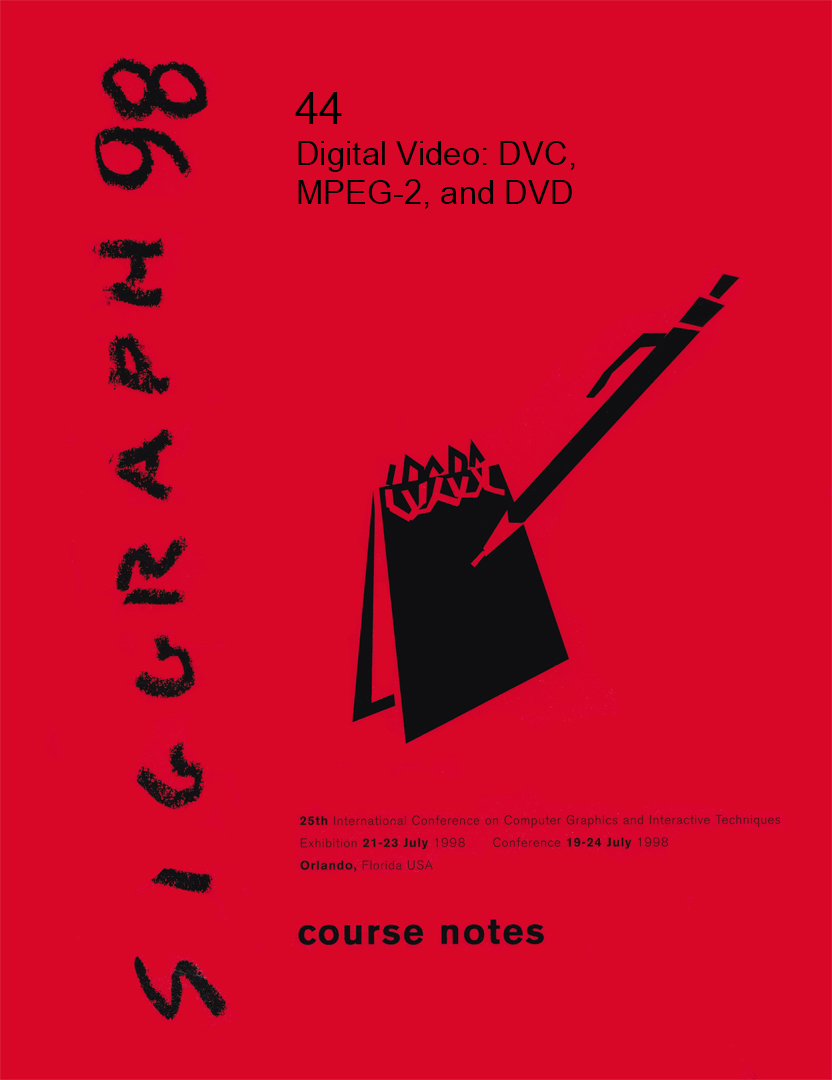“Digital Video: Motion JPEG, MPEG-2, DVC, and DVD” by Poynton and Isnardi
Conference:
Type(s):
Entry Number: 44
Title:
- Digital Video: Motion JPEG, MPEG-2, DVC, and DVD
Organizer(s):
Presenter(s)/Author(s):
Abstract:
Prerequisites
Detailed knowledge of image coding, as from Color Image Coding (Course 25) and familiarity with video technology as from Digital Video: Algorithms and Interfaces (Course 43).
Topics Covered
The quality that can be expected from MPEG at particular bit rates, cause and prevention of compression artifacts, quality considerations in MPEG encoding and decoding, how the implementation options of MPEG-2 address diverse applications, and the relationships among the JPEG, MPEG-1, H.261, and MPEG-2 standards.
Description
To record video, computer graphics professionals have long been faced with a dilemma: consumer-grade analog recording (with inferior picture quality), studio digital video equipment (which is very expensive), or software-based decompression on workstations or desktop computers (with the poor performance). Solutions to these dilemmas are at hand: Digital Video Cassette (DVC) and Digital Versatile Disc (DVD). DVC brings high-quality digital recording to computer graphics professionals. DVD offers high-performance and low-cost distribution of video. This course explained the Motion JPEG technology at the heart of DVC, and the MPEG-2 standard that is the basis of DVD coding.
Contributed By:
- Mary Whitton
Location:
- Charles Babbage Institute Archives, University of Minnesota





